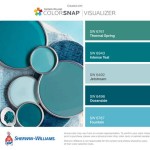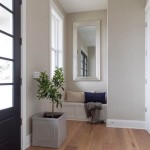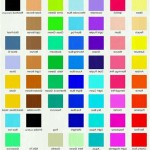How to Use Complementary Colors In Painting
Complementary colors, situated opposite each other on the color wheel, represent a dynamic and potent tool for artists seeking to create visual interest, enhance vibrancy, and achieve balance within their paintings. Understanding the principles of color theory and the specific relationships between complementary pairs is crucial for effectively harnessing their power. This article explores the effective use of complementary colors in painting, providing practical strategies and highlighting their diverse applications.
Complementary color pairs include, but are not limited to: red and green, blue and orange, and yellow and violet. When placed adjacent to each other, these colors intensify each other, making them appear more vivid and saturated. This phenomenon arises from the simultaneous contrast effect, wherein the eye perceives the color’s complement more strongly. Conversely, when mixed together, complementary colors tend to neutralize each other, producing a brown or gray tone. This neutralizing effect is equally valuable, allowing artists to create muted hues and subtle gradations.
Understanding the Color Wheel and Complementary Relationships
The color wheel serves as a fundamental guide for understanding color relationships. It organizes colors based on their hues, saturation, and value. Primary colors (red, yellow, and blue) form the foundation of the wheel, and secondary colors (green, orange, violet) are created by mixing two primary colors. Tertiary colors, such as red-violet, blue-green, and yellow-orange, result from mixing a primary and a secondary color. The color directly opposite a given color on the wheel is its complement.
The intensity of the interaction between complementary colors depends on their saturation and value. Highly saturated, pure complementary colors, when placed side-by-side, will create the most dramatic contrast. However, if one or both colors are desaturated or darkened, the contrast will be less pronounced. It is important to experiment with different values and saturation levels to achieve the desired effect.
Beyond the basic complementary pairs, exploring split-complementary color schemes can offer more nuanced results. A split-complementary scheme involves selecting a base color and then using the two colors adjacent to its complement. For example, instead of using blue and orange, an artist might use blue with yellow-orange and red-orange. This creates a strong contrast but with a slightly less intense feeling than the direct complementary pair.
Strategies for Using Complementary Colors Effectively
Several strategies can be employed to maximize the impact of complementary colors in painting. One common approach is to use one color as the dominant hue and the other as an accent. This prevents the painting from becoming visually overwhelming and creates a sense of balance. For instance, a landscape painting might feature predominantly green foliage with small touches of red flowers to draw the eye and create visual interest.
Another effective technique involves using complementary colors to create depth and dimension. Warmer colors (reds, oranges, yellows) tend to advance, while cooler colors (blues, greens, violets) recede. By using warm and cool complementary colors strategically, artists can create a sense of spatial depth. For example, in a still life painting, a warm orange fruit placed in front of a cool blue background will appear closer to the viewer.
The use of complementary colors for shading and highlights can also significantly enhance a painting. Instead of simply adding black or white to a color to create shadows or highlights, consider using its complement. For example, to shade a yellow object, adding violet will create a more nuanced and interesting shadow than using black. Similarly, to highlight a red object, adding a touch of green can create a subtle but effective luminosity.
Furthermore, consider the psychological effects of different color combinations. Red and green, while often associated with Christmas, can also evoke feelings of energy and excitement. Blue and orange can create a sense of harmony and balance. Yellow and violet can convey a feeling of royalty or mystery. Understanding these associations can help artists choose the most appropriate color palette for their intended message or mood.
Practical Applications and Examples
The application of complementary colors extends across various genres of painting. In landscapes, the contrast between blue skies and orange sunsets can create breathtaking visuals. The warm tones of sunlight filtering through green foliage can be captured by juxtaposing yellows and greens with touches of red and violet. The subtle nuances of shadows on snow can be depicted by layering blues and violets with hints of yellow and orange.
In portraiture, complementary colors can be used to enhance skin tones and create compelling compositions. For example, using a warm orange underpainting beneath a cool blue portrait can create a subtle vibrancy and depth. Accenting the features of the subject with complementary colors, such as using a touch of green to highlight red lips, can draw the viewer's eye and create a focal point.
Still life paintings offer a rich opportunity to explore the interplay of complementary colors. Arranging objects with contrasting hues, such as a red apple next to a green pear, can create a visually dynamic composition. Using complementary colors to shade and highlight the objects can further enhance their three-dimensionality and create a sense of realism.
Abstract painting provides the most freedom for experimentation with complementary colors. Artists can explore the expressive potential of these combinations without the constraints of representational accuracy. Bold, gestural brushstrokes of contrasting hues can create a sense of energy and dynamism. Subtle layering of complementary colors can create complex textures and patterns.
The key to successfully using complementary colors lies in careful planning and experimentation. Begin by creating a small color study to test different combinations and explore their effects. Consider the desired mood and message of the painting and choose colors accordingly. Pay attention to the balance between warm and cool colors, and experiment with different values and saturation levels to achieve the desired result. Practice and observation are essential for mastering the art of using complementary colors effectively.
The choice of painting medium also influences the interaction of complementary colors. Oil paints allow for subtle blending and layering, creating smooth transitions between hues. Acrylic paints dry quickly and can be used to create bold, graphic effects. Watercolors offer a delicate and transparent quality, allowing for subtle washes and gradations. Each medium presents its own unique challenges and opportunities for working with complementary colors.

3 Tricks Of Complementary Colours You Can Learn From Van Gogh

3 Tricks Of Complementary Colours You Can Learn From Van Gogh

How The Impressionists Used Complementary Colors To Great Effect

Painting With Complementary Colors

3 Tricks Of Complementary Colours You Can Learn From Van Gogh

Painting With Complementary Colors

3 Tricks Of Complementary Colours You Can Learn From Van Gogh

Painting With Complementary Colors Brad Blackman Fine Art

Portrait I Overview Painting With Complementary Color Schemes Tanya Jung

What Are Complementary Colors In Art Quora
Related Posts








